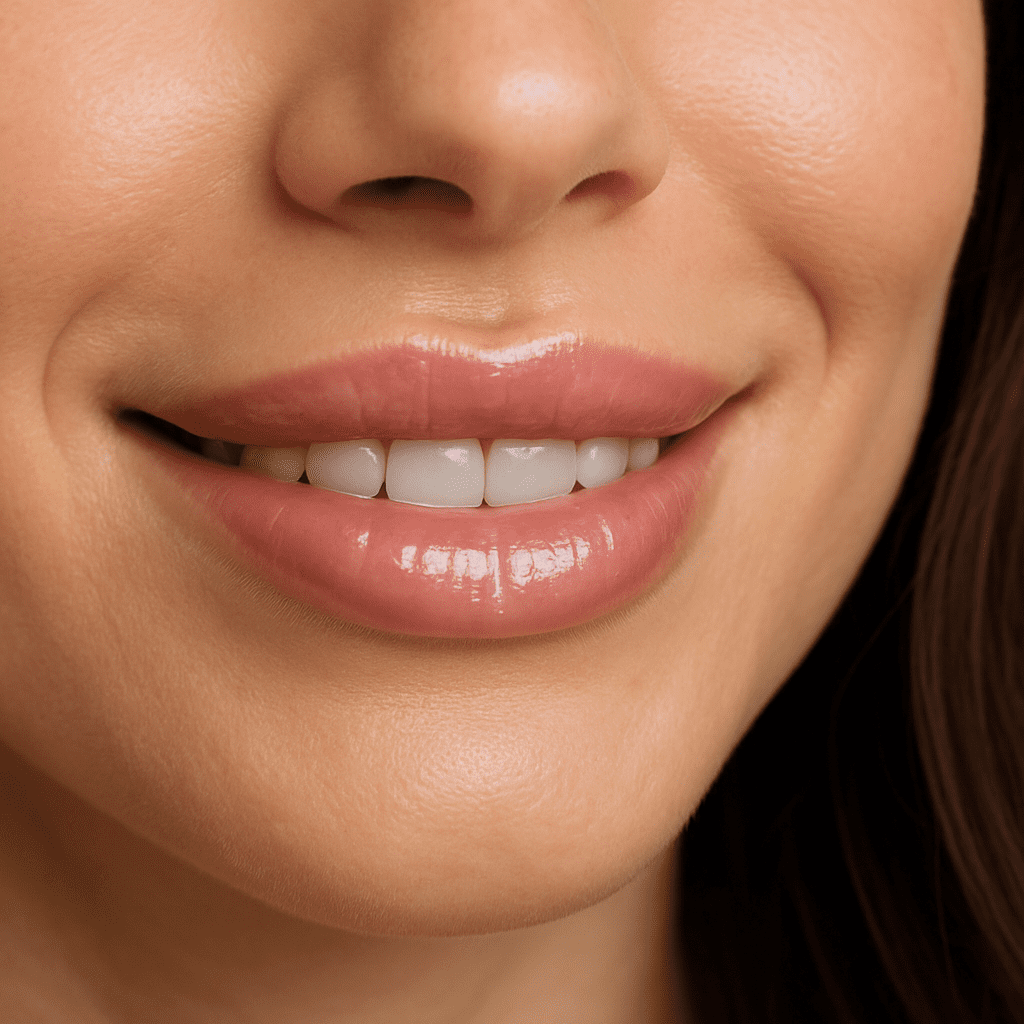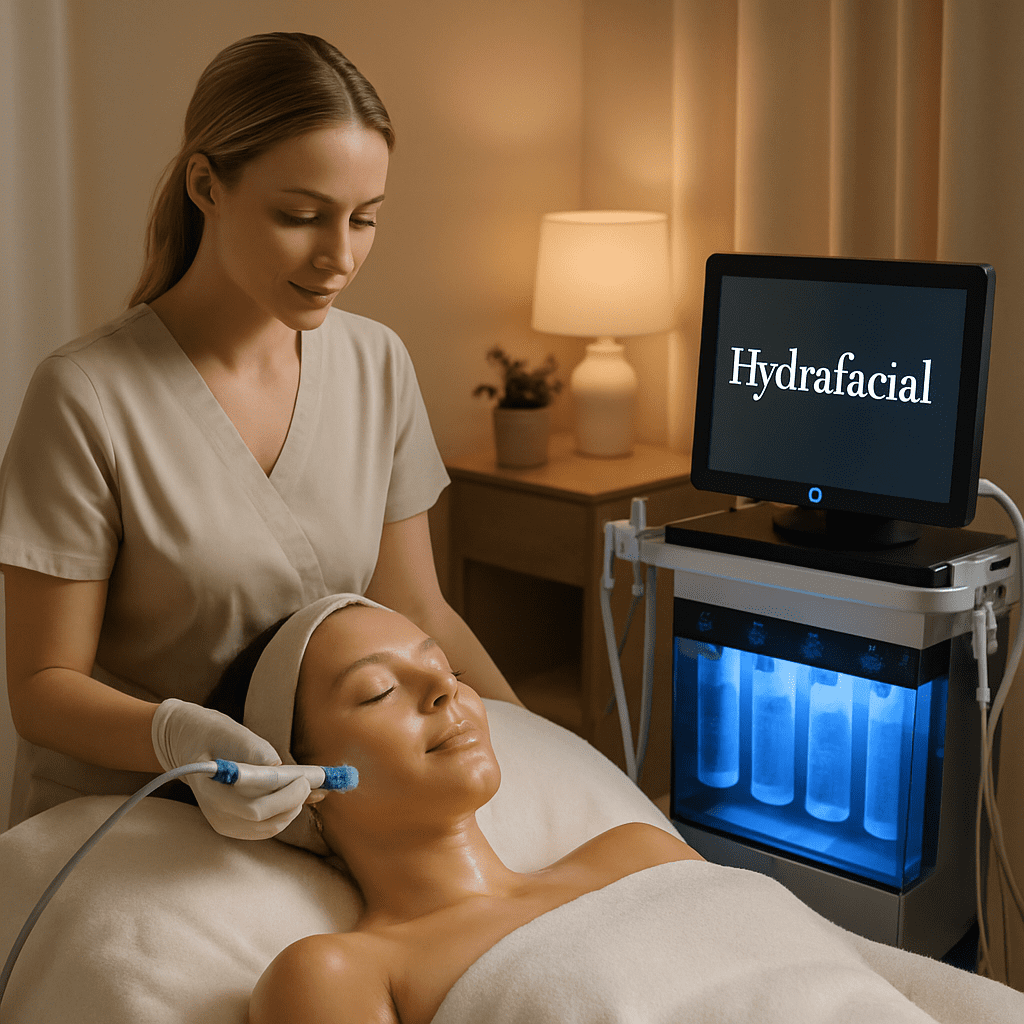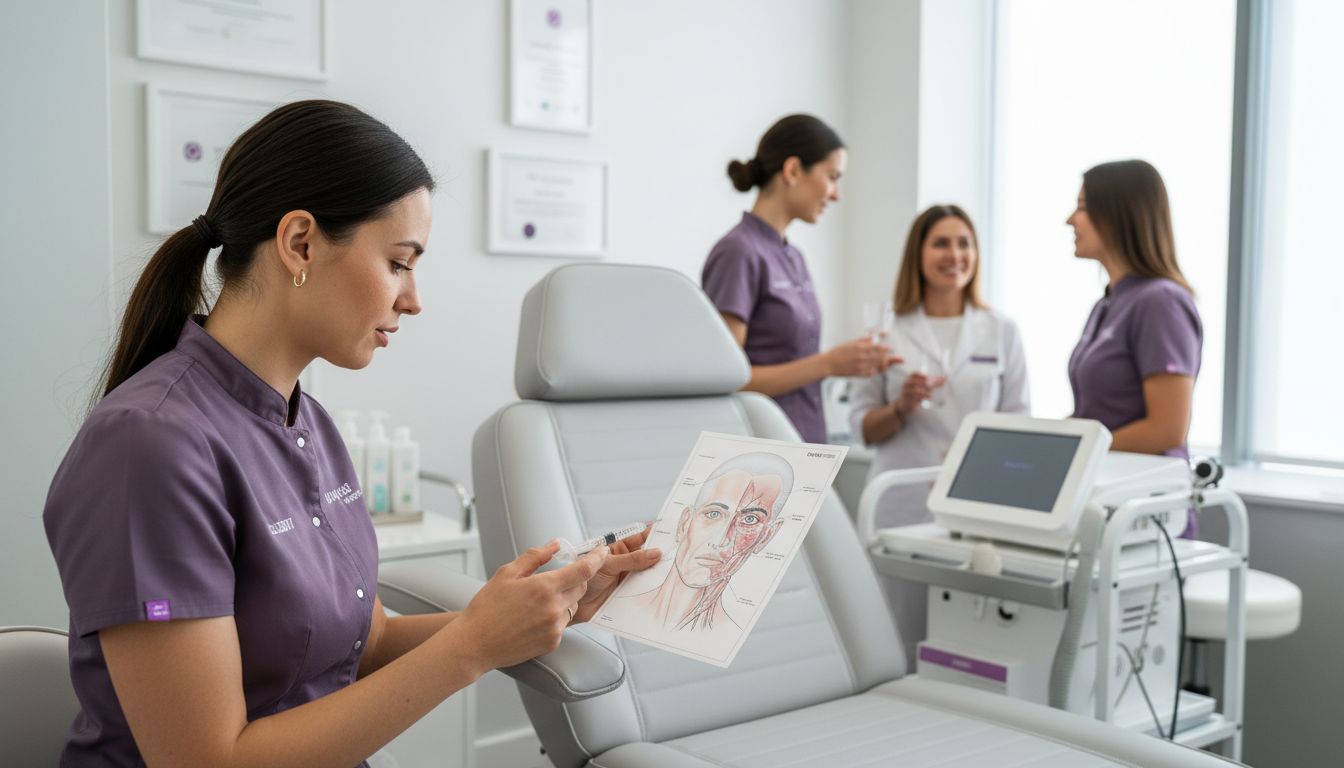Ever looked in the mirror after a lip filler appointment and thought, ‘How long does this actually last?’ – you’re not alone.
Most of us want that fresh‑kissable pout without waking up weeks later to a flatter smile, yet the truth is a bit messier than a simple ‘six months’ answer. The longevity of lip filler depends on a handful of personal factors, from the type of filler used to your own metabolism.
Think about it way: a filler is like a tiny gel cushion you’re putting under the skin. Some cushions hold shape for a long time, others soften quicker. That’s why two friends can get the same product and see different results after the same period.
So, what really drives the clock? First, the brand and formulation matter – hyaluronic‑acid fillers tend to dissolve naturally, while newer ‘long‑lasting’ blends can stick around a bit longer. Second, your body’s natural enzyme activity plays a big role; people with higher hyaluronidase levels will see the filler break down faster. Third, lifestyle choices – smoking, excessive sun, and extreme weight fluctuations can accelerate the fading.
And let’s not forget after‑care. Simple steps like staying hydrated, using gentle skincare, and avoiding aggressive facial massages can help the filler settle and last closer to its peak duration.
Here’s a quick mental checklist: choose a reputable clinic, discuss which filler aligns with your goals, ask about expected longevity, and commit to a gentle after‑care routine. If you keep those boxes checked, you’ll likely enjoy plump, natural‑looking lips for the majority of the typical timeframe – usually somewhere between six and twelve months.
Ready to plan your next appointment? Let’s dive deeper into the exact factors that influence how long your lip filler will stay put, and how you can stretch those results a little farther today.
TL;DR
If you’ve ever wondered how long does lip filler last, the answer is six to twelve months, depending on the filler type, your metabolism, and lifestyle choices.
By picking a reputable clinic, discussing longevity, and following gentle after‑care, you can maximize results and enjoy a plump pout throughout that period.
Understanding Lip Filler Longevity
When you walk out of the clinic with that fresh, plump pout, the next question that sneaks into your mind is: “How long does this actually stay?” It’s a legit worry because the answer isn’t a tidy “six months” for everyone.
What the science says
Most lip fillers on the market are based on hyaluronic acid (HA), a sugar‑like molecule your body already produces. Brands like Juvederm®, Restylane® and Perlane® all use slightly different HA formulations, which is why some feel “bouncier” and last a bit longer than others. According to the Cleveland Clinic, HA‑based fillers typically linger for 12 to 18 months, but the exact timeline hinges on your personal metabolism and how quickly your body’s enzymes break down the gel Cleveland Clinic explains.
Think of HA as a sandcastle on the beach. The tide (your body’s hyaluronidase enzyme) comes in at its own pace. If the tide is high—meaning you have a faster enzyme activity—the castle erodes sooner. If the tide is gentle, the structure sticks around longer.
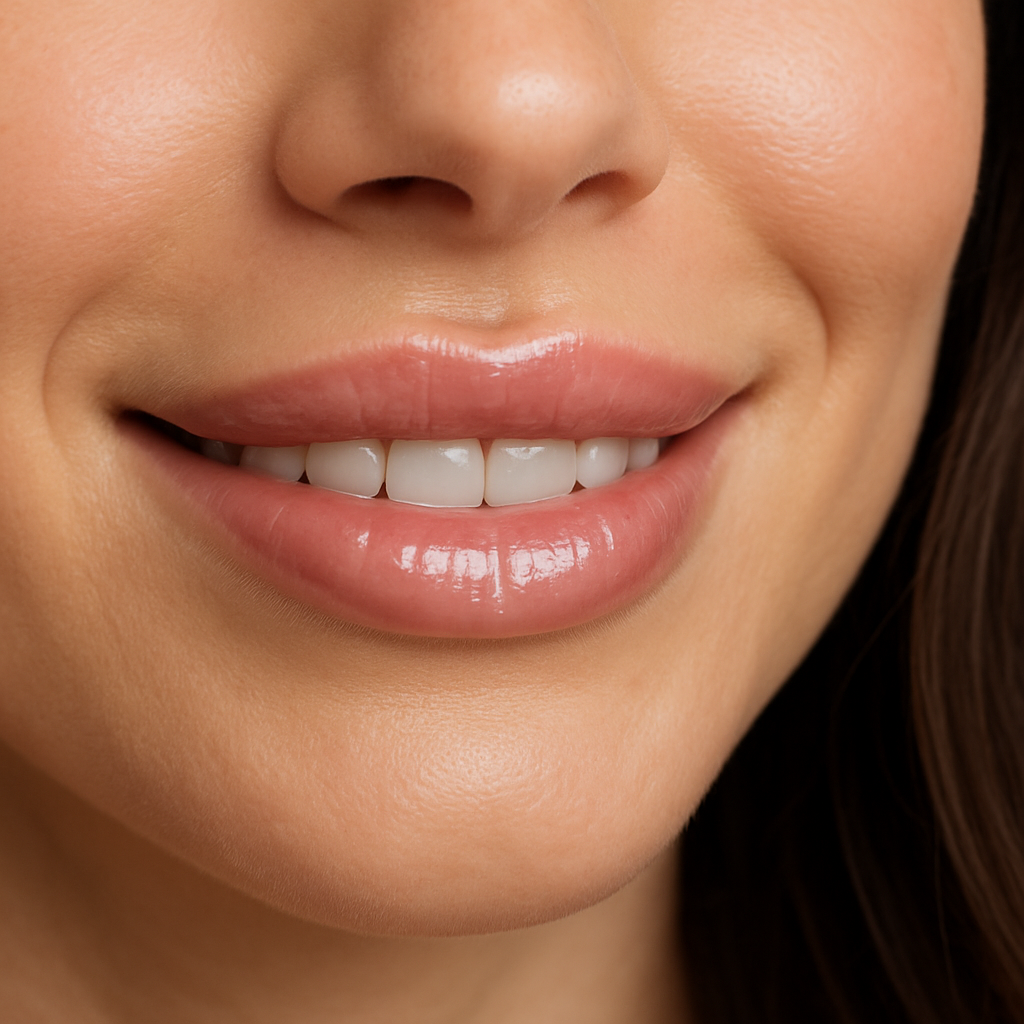
Every body is different
Here’s a quick story: Sarah, 28, works in a high‑intensity fitness studio and burns calories like a furnace. She noticed her filler softened after about eight months. Meanwhile, her friend Maya, 45, who leads a more sedentary lifestyle, still had a noticeable boost at the 14‑month mark. The difference? Metabolism, but also a handful of lifestyle quirks.
- Age. Younger skin tends to remodel faster, so the filler can dissolve a bit quicker.
- Smoking. Nicotine constricts blood vessels, leading to poorer healing and faster breakdown.
- Sun exposure. UV rays accelerate collagen loss, which can indirectly affect filler stability.
- Weight fluctuations. Gaining or losing significant weight stretches or compresses the lip tissue, altering how the filler sits.
- Hydration. Well‑hydrated skin maintains HA longer; dehydration speeds up degradation.
Notice how many of these are things you can actually control? That’s where the actionable part comes in.
Practical ways to stretch your results
1. Gentle after‑care. For the first 24‑48 hours, skip straws, spicy foods, and vigorous lip exercises. Ice packs help reduce swelling, which in turn lets the filler settle evenly.
2. Stay hydrated. Aim for at least eight glasses of water a day. Think of water as the oil that keeps the HA gel from drying out too fast.
3. Shield from the sun. A lip balm with SPF 30+ is a tiny habit that pays off. It protects the delicate skin and slows collagen breakdown.
4. Mind your meds. Some supplements, like high‑dose vitamin E, can thin the blood and increase bruising, which may affect how the filler integrates. Talk to your provider before adding new supplements.
5. Schedule smart touch‑ups. Most clinicians recommend a “maintenance” session at the nine‑month mark. This isn’t a full refill—just a light top‑up that smooths out any early fade and can actually extend the overall lifespan to 18 months.
6. Ask about “cross‑linking” levels. Some HA fillers are engineered with higher cross‑linking, meaning the gel is more resistant to enzymatic breakdown. Your practitioner can match the product to your lifestyle—for example, a more robust filler for active clients.
Bottom line: Understanding the chemistry helps you set realistic expectations, but your daily choices are the real game‑changers. By staying hydrated, protecting your lips from the sun, and planning timely touch‑ups, you’re essentially giving the filler a better environment to thrive.
So, what should you do right now? Grab a water bottle, swipe on SPF lip balm, and book a quick check‑in with your clinic to discuss the filler type that aligns with your routine. With a little foresight, that luscious smile can stick around longer than you thought.
Factors That Influence How Long Lip Filler Lasts
Ever wondered why your friend’s lips still look plump while yours already feel a bit flat? It’s not magic – it’s a mix of chemistry, biology, and daily habits.
1. The filler formula itself
Not all fillers are created equal. Hyaluronic‑acid (HA) gels come in different concentrations, viscosities, and cross‑linking levels. Higher cross‑linking means the gel resists enzymatic breakdown longer, so you’ll typically see results linger toward the upper end of the six‑to‑twelve‑month range.
For example, MI Skin Dermatology Center notes that HA fillers can last anywhere from six months to two years, depending on the specific product and the patient’s metabolism according to their expert guide.
2. Your body’s natural turnover
Your skin is constantly remodeling. Enzymes called hyaluronidases chew up the filler over time. People with a faster metabolic rate – think avid runners or high‑intensity trainers – often notice the gel fading a bit sooner.
Conversely, a slower metabolism can stretch that timeline, letting the filler stay plump a few extra months. It’s basically your body’s own clock.
3. Where the filler lives
Lips are one of the most mobile facial areas. Every smile, sip, or kiss flexes the tissue, which speeds up breakdown compared with a more static zone like the cheeks.
That’s why many clinicians suggest a “maintenance” touch‑up around the nine‑month mark – it smooths out early fade before the motion‑induced wear really kicks in.
4. Lifestyle habits that tip the scales
Smoking is a classic culprit. The chemicals in cigarettes accelerate hyaluronic‑acid degradation and shrink blood flow, meaning the filler dissolves faster.
Sun exposure is another silent thief. UV rays break down collagen and elastin, creating a less supportive matrix for the filler to sit in.
Phoenix Liposuction highlights both smoking and excessive sun as major factors that can cut filler longevity short in their lifestyle‑focused article. Swap that cigarette for a walk, and don’t forget SPF on your favorite lip balm.
Hydration plays a surprisingly big role, too. Well‑watered skin holds HA better, while dehydration dries out the gel and invites quicker breakdown.
Stress and sleep matter as well. High cortisol levels can increase inflammation, which subtly speeds up enzymatic activity. Aim for 7‑9 hours of quality sleep and incorporate stress‑busting habits like yoga or short breathing drills.
5. After‑care tricks you can start today
Skip the straw, spicy sauces, and intense lip exercises for the first 48 hours. This gives the filler a chance to settle evenly.
Apply an SPF‑30+ lip balm daily – it’s a tiny habit that protects the delicate skin and keeps the filler from drying out.
Drink at least eight glasses of water a day. Think of water as the oil that keeps the HA gel supple.
Consider a gentle, hyaluronic‑acid‑based serum at night. It can boost overall skin hydration without over‑stimulating the filler.
6. When to schedule a touch‑up
Most providers recommend a light top‑up around nine months. It isn’t a full refill; just enough to smooth any early fade and effectively extend the overall lifespan to 18 months for many patients.
Having a maintenance plan with your clinician helps you avoid the surprise of a sudden “deflation” and keeps your smile looking natural.
So, what’s the bottom line? The longevity of lip filler is a dance between the product’s chemistry, your body’s metabolism, the movement of the lip area, and the everyday choices you make.
Ready to put these tips into practice? Grab a water bottle, swipe on SPF lip balm, and book a quick check‑in with Simcoe Cosmetic Clinic to discuss the filler type that fits your lifestyle.
Comparing Different Lip Filler Brands and Their Duration
When you start asking how long does lip filler last, the first thing you’ll notice is that not every product behaves the same way.
Some brands feel like a soft pillow that stays plump for almost a year, while others give a quick pop‑of‑volume that eases off after a few months. It’s a little like choosing between a durable leather boot and a stylish canvas sneaker – both look great, but they last different lengths depending on how you treat them.
What sets the brands apart?
In a nutshell, three factors drive the longevity numbers you see on a product sheet: the concentration of hyaluronic acid, the degree of cross‑linking, and the particle size. Higher cross‑linking means the gel resists the body’s natural enzymes longer, so you generally get a longer runway.
But it’s not just chemistry. Your metabolism, how much you talk, smile, or sip through a straw, and even the climate you live in can nudge the clock forward or backward.
Brand‑by‑brand snapshot
Below is a quick cheat‑sheet that lines up the most popular HA fillers you’ll hear about at Simcoe Cosmetic Clinic. We’ve boiled the data down to three practical columns: typical duration, cross‑linking level, and who might benefit most.
| Brand | Typical Duration | Cross‑linking / Who’s It For? |
|---|---|---|
| Juvederm Ultra XC | 9–12 months | Medium cross‑linking – ideal for first‑timers who want a natural feel without committing to a full year. |
| Restylane Silk | 6–9 months | Low‑to‑medium cross‑linking – great for subtle enhancement or “just‑right” boost before a big event. |
| Belotero Balance | 10–14 months | High cross‑linking – works well for active lifestyles where the lips move a lot. |
| Volbella (Juvéderm Volbella XC) | 12–18 months | Very high cross‑linking – perfect for clients who want the longest stretch and are comfortable with a slightly firmer gel. |
Notice the spread? If you’re the type who drinks smoothies on the go, a high‑cross‑linked option like Volbella or Belotero might give you that extra cushion against daily wear and tear.
On the other hand, if you prefer a softer, more “feathery” feel and don’t mind a touch‑up around nine months, Restylane Silk is a solid pick.
Take Maya, who swears by Juvederm Ultra XC. She’s happy with a yearly maintenance schedule. Contrast that with Alex, a fitness instructor who tried Restylane Silk for a summer wedding. The volume softened after about six months, so he scheduled a quick top‑up and never looked back.
These stories illustrate a simple rule of thumb: match the product’s durability to your lifestyle rhythm. The more motion and moisture your lips endure, the more you’ll lean toward a high cross‑linked formula.
Tips to squeeze every extra week out of your filler
- Keep your lips moisturized with an SPF‑30+ balm – dehydration accelerates breakdown.
- Avoid aggressive lip exercises for the first 48 hours; let the gel settle.
- Stay consistent with your touch‑up plan; a light top‑up at nine months can push the lifespan past the average.
Bottom line: there isn’t a one‑size‑fits‑all answer to how long does lip filler last. It hinges on the brand, its cross‑linking, and how you treat your lips daily. Knowing the differences lets you pick the right filler and avoid surprise deflation.
Ready to find the perfect match? Talk to the Simcoe Cosmetic Clinic team; they’ll help you decide which brand fits your routine like a glove.
How to Maximize the Duration of Your Lip Fillers
So you’ve got that fresh, plump pout and you’re wondering, “how long does lip filler last” before it starts to whisper goodbye? Trust me, we’ve all been there – the excitement of a fuller smile followed by the dreaded fade. The good news? A lot of that clock is in your hands.
Step 1: Gentle first‑48‑hour window
Right after the injection, think of your lips like a newly planted seed. You wouldn’t sprint over it, right? Avoid aggressive lip exercises, straw‑sipping, and hot, spicy foods for the first two days. This lets the gel settle evenly and reduces the chance of early breakdown.
Step 2: Hydration is your secret weapon
Hyaluronic acid, the star ingredient in most fillers, loves water. The more hydrated your skin, the longer that gel stays plump. Aim for at least eight glasses a day and keep a hydrating lip balm (SPF‑30+ if you’re outdoors) on hand. It’s a tiny habit that pays off in weeks, sometimes months.
Step 3: Sun protection – not just for your skin
UV rays chew up collagen and can accelerate the enzymatic breakdown of filler. A simple swipe of a sun‑protective balm before you step outside creates a barrier that shields both the skin and the filler underneath.
Step 4: Mind your metabolism
People who run, cycle, or do high‑intensity workouts often notice their filler fading a touch sooner. That’s because their bodies metabolize substances a bit faster. It doesn’t mean you have to quit the gym – just schedule a light touch‑up a little earlier, around the nine‑month mark, to keep the volume consistent.
Step 5: Consistent after‑care routine
Here’s a quick checklist you can follow daily:
- Apply a hyaluronic‑acid‑based lip moisturizer at night.
- Drink water throughout the day.
- Use an SPF‑30+ lip balm whenever you’re outdoors.
- Avoid excessive lip‑picking or harsh rubbing.
Stick to this routine and you’ll notice the filler staying fuller for longer. It’s like feeding a plant – a little water and sunshine every day keeps it thriving.
Step 6: Schedule smart touch‑ups
Instead of waiting for a dramatic deflation, plan a maintenance appointment about nine months after the first treatment. A light top‑up can extend the overall lifespan to 18 months for many clients. It’s a far less noticeable tweak than a full refill.
And if you’re curious about how local experts approach this, check out the Expert Insights on Lip Filler Treatments in Barrie for a deep dive into scheduling and product choices that match your lifestyle.
Step 7: Stress management and sleep
High cortisol levels from stress can increase inflammation, nudging your body to break down filler a bit faster. Prioritize 7‑9 hours of quality sleep and incorporate short breathing exercises or yoga into your routine. It sounds cliché, but the science backs it up.
Finally, remember that every body is different. If you’re ever in doubt, a quick consultation can pinpoint the exact product and after‑care plan that will keep your lips looking luscious.
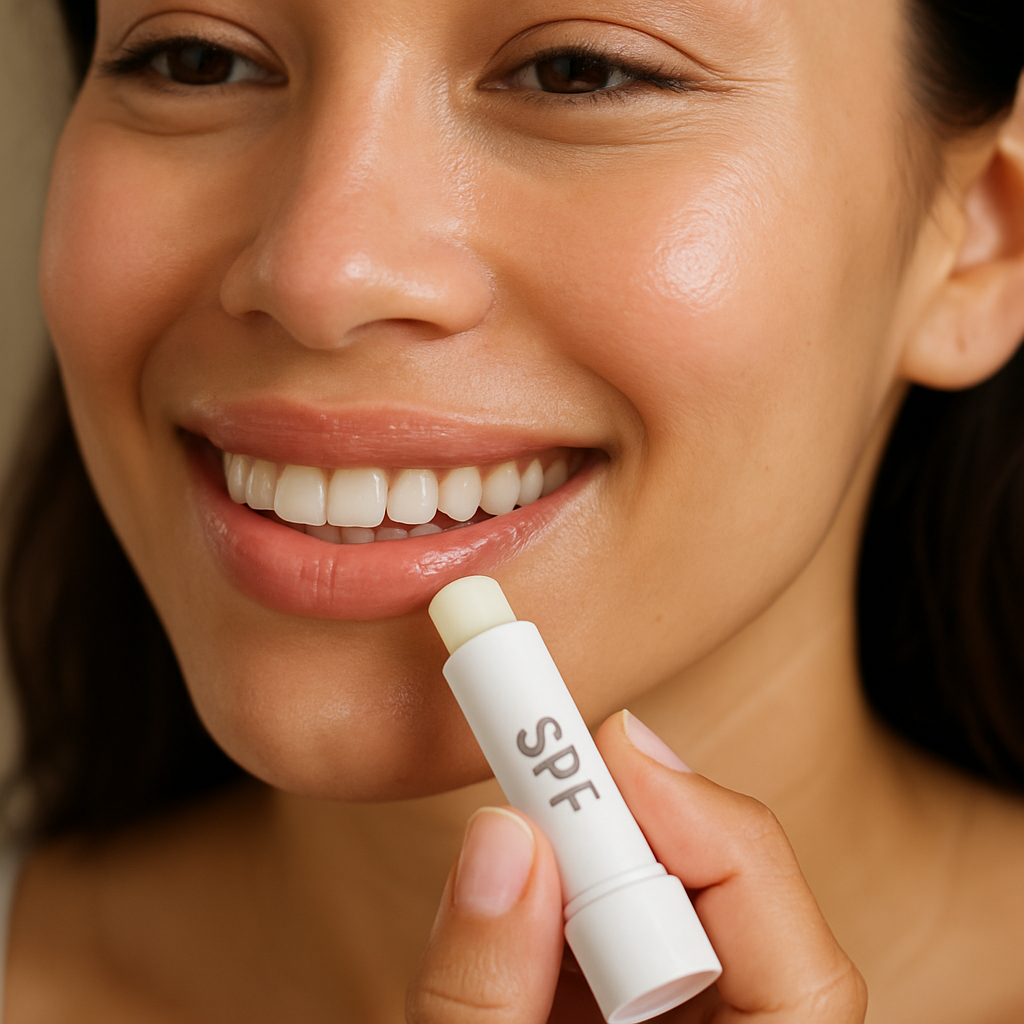
For a concise roundup of the science behind these tips, the team at Sadeghi Plastic Surgery outlines effective tips for extending the life of lip fillers. Their guidance lines up perfectly with what we’ve covered: hydration, sun protection, gentle after‑care, and smart touch‑ups.
So, what’s the next move? Grab your favorite SPF lip balm, fill your water bottle, and schedule that nine‑month check‑in. Your lips will thank you with lasting volume and confidence.
When to Schedule a Follow-Up Appointment
You’ve just left the clinic with that fresh, plump pout, and you can already picture yourself smiling in the mirror. But after a few weeks, you might notice the volume softening a bit—how do you know it’s time to book that next appointment?
Look for the first signs of fade
When the initial plumpness starts to shrink and your lips return toward their pre‑filler shape, that’s the most obvious cue. A subtle loss of definition around the vermilion border or a slight asymmetry that wasn’t there before usually means the hyaluronic acid is breaking down.
According to Skinlogic explains when touch‑ups become necessary, most fillers begin to lose noticeable volume between six and twelve months, depending on the product and your metabolism.
Consider your lifestyle and metabolism
If you’re a frequent runner, a social butterfly who never misses a glass of wine, or you smoke occasionally, your body may process the filler faster. High‑intensity workouts and a fast metabolism can shave weeks off the lifespan of your lip filler.
Theia Aesthetics notes that filler longevity can range from three to 18 months, with lifestyle factors playing a big role. So if you notice a quicker fade than a friend with a more sedentary routine, factor that into your calendar.
Set a proactive timeline
Rather than waiting for a dramatic deflation, aim to schedule a check‑in about eight to nine months after your first treatment. This timing gives the filler enough time to settle while still leaving a window for a light top‑up before you notice a major change.
Here’s a quick checklist you can paste into your phone:
- Mark the date of your initial injection.
- Add a reminder at the 8‑month mark: “Ask about touch‑up options.”
- Note any changes you see—volume loss, shape shift, asymmetry.
- Schedule a 15‑minute consultation to discuss the best next step.
Ask yourself these quick questions
Before you pick up the phone, run through a mental audit:
- Do my lips look noticeably less full than they did right after the treatment?
- Has the outline of my lips softened or become uneven?
- Am I using a lot of sun, smoking, or exercising intensely?
- Do I want to maintain a consistent look, or am I okay with a gradual fade?
If you answered “yes” to any of those, it’s a green light to book that follow‑up.
What to expect at the follow‑up appointment
The clinician will assess your current volume, check for any asymmetry, and discuss which filler—maybe a higher cross‑linked option—will suit your lifestyle best. Many patients opt for a “maintenance top‑up,” which is a smaller amount of filler that smooths out the loss without over‑filling.
Because the goal is to keep your lips looking natural, the doctor may suggest a staggered schedule: a light touch‑up at nine months, then another at 15‑18 months, depending on how your body reacts.
Make it a habit, not a chore
Think of your lip filler like a favorite pair of shoes—you’ll want to keep them in good shape. A quick calendar reminder, a note in your wellness app, or even a sticky on your fridge can turn the follow‑up into a routine self‑care step.
And remember, you don’t have to wait for a crisis. Proactive maintenance means you’ll keep that confident smile year after year without the surprise “oh no, my lips look flat” moment.
So, grab your planner, set that nine‑month reminder, and enjoy the peace of mind that comes with knowing you’ve got a plan. Your future self (and your lips) will thank you.
FAQ
How long does lip filler last for most people?
In general, most hyaluronic‑acid lip fillers stick around for six to twelve months, but the exact timeline depends on the product you choose, your metabolism, and how you treat your lips after the injection. A higher‑cross‑linked filler tends to linger a bit longer, while a softer gel might fade closer to the six‑month mark. Think of it like a garden: the right soil (your skin’s health) and care (hydration, sun protection) help the bloom stay vibrant.
What factors can make my lip filler wear off faster?
Several things can speed up the breakdown: a fast metabolism, high‑intensity workouts, smoking, and frequent exposure to UV rays all encourage your body to digest the filler sooner. Even something as simple as constantly sipping through a straw or over‑exfoliating the lips can nudge the gel out of place. If you notice a quicker fade, consider tweaking these habits and planning a touch‑up a little earlier than the typical nine‑month window.
Should I schedule my touch‑up before I actually see a noticeable fade?
Yes—most clinicians recommend a proactive check‑in around eight to nine months after the first treatment. That way you can catch any subtle volume loss before it becomes obvious in the mirror. A light “maintenance top‑up” usually involves less product than the original session, keeping the look natural and avoiding over‑filling. It’s like setting a reminder to oil a bike chain before it squeaks; a little effort now prevents a bigger problem later.
Can I extend the life of my lip filler with after‑care?
Absolutely. Hydration is your best friend—drink plenty of water and keep a hyaluronic‑acid lip balm handy, especially with SPF. Sun protection isn’t just for your skin; UV rays can accelerate the enzymatic breakdown of the filler. Also, avoid harsh lip‑picking, extreme temperature changes, and aggressive lip‑exercises for the first 48 hours. Small daily habits add up and can stretch that plumpness a few extra weeks.
Is there a difference in longevity between different filler brands?
Yes, the formulation matters. Products with a higher degree of cross‑linking—think “stiffer” gels—tend to linger closer to the twelve‑month mark, while softer, more fluid fillers might start to soften around six months. Your clinician will match the brand to your aesthetic goals and lifestyle, so you get a balance of natural movement and lasting volume. It’s not a one‑size‑fits‑all, and a quick chat can pinpoint the best fit for you.
What should I ask my doctor during a follow‑up appointment?
Bring a short checklist: “How much volume have I lost?”, “Do you see any asymmetry?”, and “Which filler would best suit my routine now?”. Also, ask about the ideal timing for the next touch‑up and any tweaks to your after‑care routine. Being specific helps your provider tailor the treatment, keeping your lips looking fresh without over‑correction.
Conclusion
We’ve walked through the science, the habits, and the timing that keep your pout looking fresh.
So, how long does lip filler last for you? The answer sits somewhere between six and twelve months, but the exact spot depends on the product you chose, your lifestyle, and the care you give it.
Remember the simple tricks: stay hydrated, slap on SPF lip balm, and schedule that nine‑month check‑in. Those tiny steps add weeks, sometimes months, to your results.
Think about it like this: you wouldn’t let a new pair of shoes go unpolished, right? Your lips deserve the same love.
If you notice a subtle loss of volume or a tiny asymmetry, don’t wait for a dramatic flattening. Reach out to Simcoe Cosmetic Clinic, and we’ll fine‑tune the filler before it looks obvious.
In short, a proactive approach—good after‑care plus a timely touch‑up—means your confidence stays as plump as the day you left the clinic.
Ready to keep that smile on point? Book your follow‑up today and let us help you enjoy lasting, natural‑looking results.
By treating your lip filler like a small, ongoing project, you’ll avoid the surprise of a flat look and keep feeling confident every time you glance in the mirror. Consistency is key.
Glossary of Lip Filler Terms
Before you schedule your next touch‑up, it helps to know the lingo you’ll hear at the clinic. Here’s a quick cheat‑sheet so you’re not left guessing.
Hyaluronic Acid (HA)
The superstar ingredient that attracts water, giving your lips that plump, natural look. Most fillers, and the reason they fade, are HA‑based.
Cross‑Linking
Think of it as the “strength” of the gel. Higher cross‑linking means the filler holds up longer, which can affect how long does lip filler last for you.
Volume Retention
This is the percentage of the original plumpness that stays after a few months. Lifestyle, metabolism, and the filler type all play a role.
Degradation Enzymes
Your body’s natural hyaluronidase breaks down HA over time. Some clinics can inject a mild enzyme to speed up removal if needed.
Top‑Up / Maintenance
A small follow‑up injection that smooths out subtle loss without over‑filling. Most people schedule this around eight to nine months.
Swelling Phase
The first 24–48 hours after injection when your lips look a bit puffier. It’s normal and usually settles within a week.
Longevity
Longevity refers to the overall duration the filler stays effective, usually six to twelve months for HA gels. Your age, skin quality, and after‑care can shift that window.
Knowing these terms lets you ask smarter questions and understand why your filler behaves the way it does. So next time you chat with your provider, you’ll sound like you’ve already done the homework.

